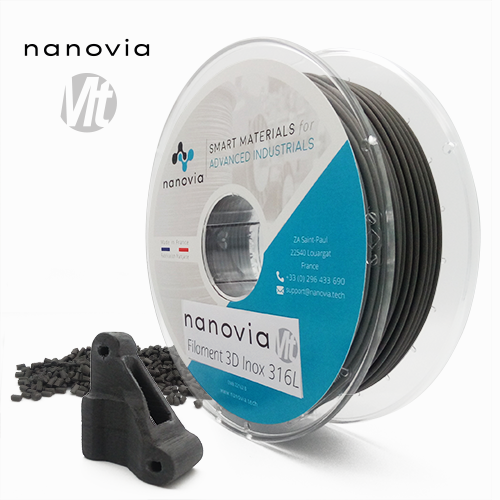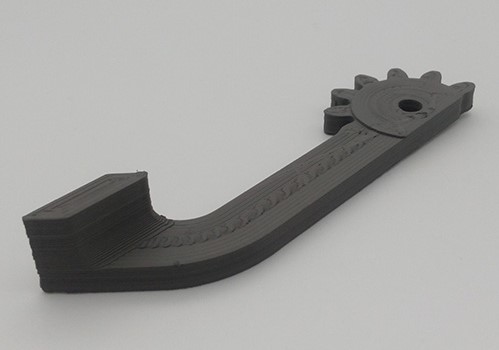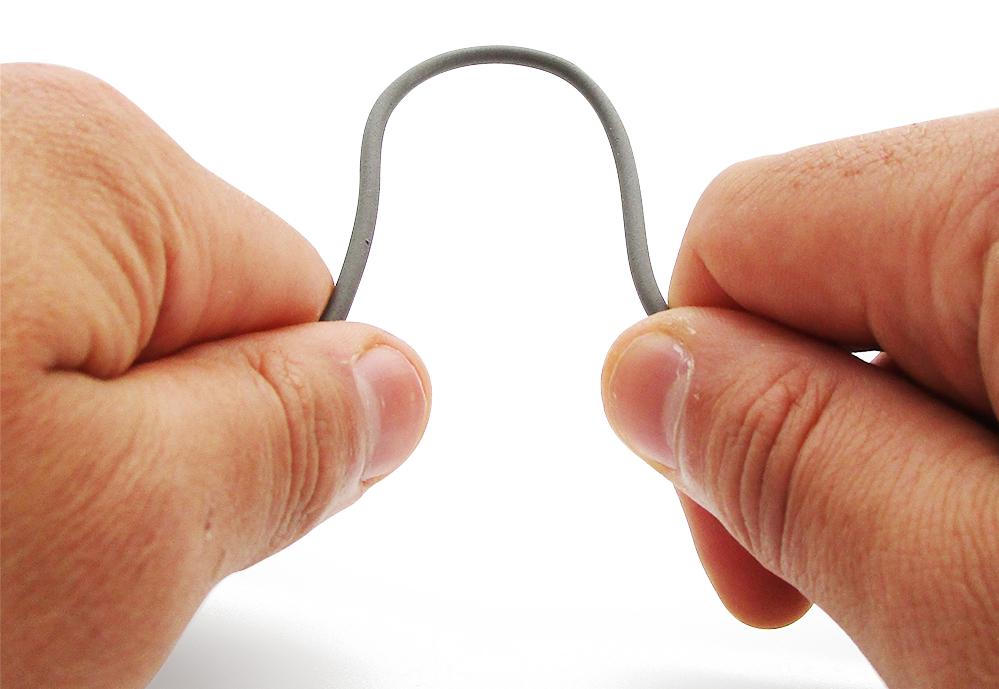France-based materials manufacturer Nanovia has announced the launch of two new 3D printing filaments.
Designed for use with extrusion-based 3D printers, Nanovia Mt Inox 316L is the company’s new stainless steel 316L filament while the upcoming Nanovia Cr SiC will be a ceramic silicon carbide offering.
The filaments are intended to enable dense metal and ceramic parts on common FDM systems, and will be processable via a final sintering step for added part density. Users will also have the option to machine their Nanovia 3D printed parts before use, fine-tuning dimensional precision and improving surface quality.
Nanovia writes, “Nanovia Mt and Cr allow for the creation of structures only possible via 3D printing, with materials that traditionally were out of its realm. It is, for example, possible to machine the ‘green’ pieces before sintering, allowing for hybrid fabrication methods.”

The new Nanovia Mt and Cr ranges
Stainless steel 316L is one of the most commonly used austenitic steels today, second in importance only to grade 304. Characterized by its excellent toughness, corrosion resistance, and heat resistance properties, the material sees extensive use in medical implants, fasteners, and the oil & gas sector for chemical-contacting parts.
Nanovia Mt Inox 316L allows customers to 3D print stainless steel parts using standard third-party FDM 3D printers at temperatures of just 210°C – 230°C, although a hardened nozzle is recommended as the filament is abrasive. By going through a sintering phase in post-processing, Inox 316L results in fully dense stainless steel components without the need for any chemical debinding.
On the other hand, silicon carbide is a synthetically produced semiconductor characterized by its hardness. Since its accidental invention in the late 19th century, the material has found its use in sandpapers, grinding wheels, and cutting tools. More recent applications of the ceramic include refractory linings, heating elements, wear-resistant components for pumps and aerospace engines, and light-emitting diodes. Set to be released soon, Nanovia Cr SiC will reportedly be extremely tough and resist temperatures up to 2000°C.
Nanovia also intends to launch several new metal and ceramic filaments in the near future, including Mt Inconel, Mt Titanium, Cr Alumine, and Cr Zircone. The full range of 3D printing filaments in the new Mt and Cr ranges will be available in both 500g and 2kg spools. The company will also be offering the materials in pellet form for use in MIM and CIM manufacturing processes.

Sintering 3D printed parts
Metal 3D printing filaments and other materials that contain additives often need to be sintered to increase part density, helping users achieve the full set of high-performance mechanical properties. Nanovia’s new Mt and Cr ranges are no exception to this.
The company’s product portfolio needs to be sintered in two phases: debinding at a lower temperature (to eliminate the polymer matrix), followed by sintering at a higher temperature (to consolidate the metal and ceramic additives). The heat from the process often shrinks the part, but the company claims retraction should be limited to around 10% – 15%, depending on the piece. Nanovia has selected a partner for this service, which will be revealed in due course.

Nanovia isn’t the only company targeting the metal FDM space, as 3D printer manufacturer Desktop Metal recently launched its own pure copper filament for use with the company’s Studio System. Known for its widespread use in electronics and heat exchangers, the material is targeted at a variety of industries such as oil and gas, automotive, and consumer products.
Elsewhere, Forward AM, the 3D printing arm of chemical company BASF, has previously launched its Ultrafuse 17-4 PH metal filament. The 17-4 stainless steel-based material comprises metal powder in a polymer matrix, and is designed to enable safe and cost-efficient metal printing on most common FFF systems.
Subscribe to the 3D Printing Industry newsletter for the latest news in additive manufacturing. You can also stay connected by following us on Twitter, liking us on Facebook, and tuning into the 3D Printing Industry YouTube Channel.
Looking for a career in additive manufacturing? Visit 3D Printing Jobs for a selection of roles in the industry.
Featured image shows Nanovia Mt Inox 316L in filament form. Photo via Nanovia.



